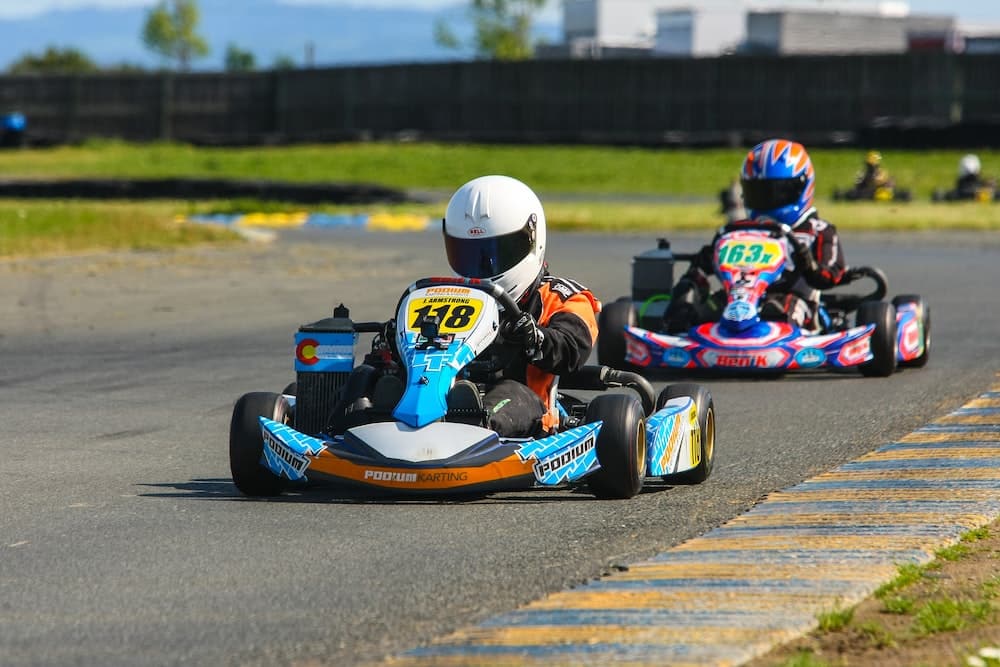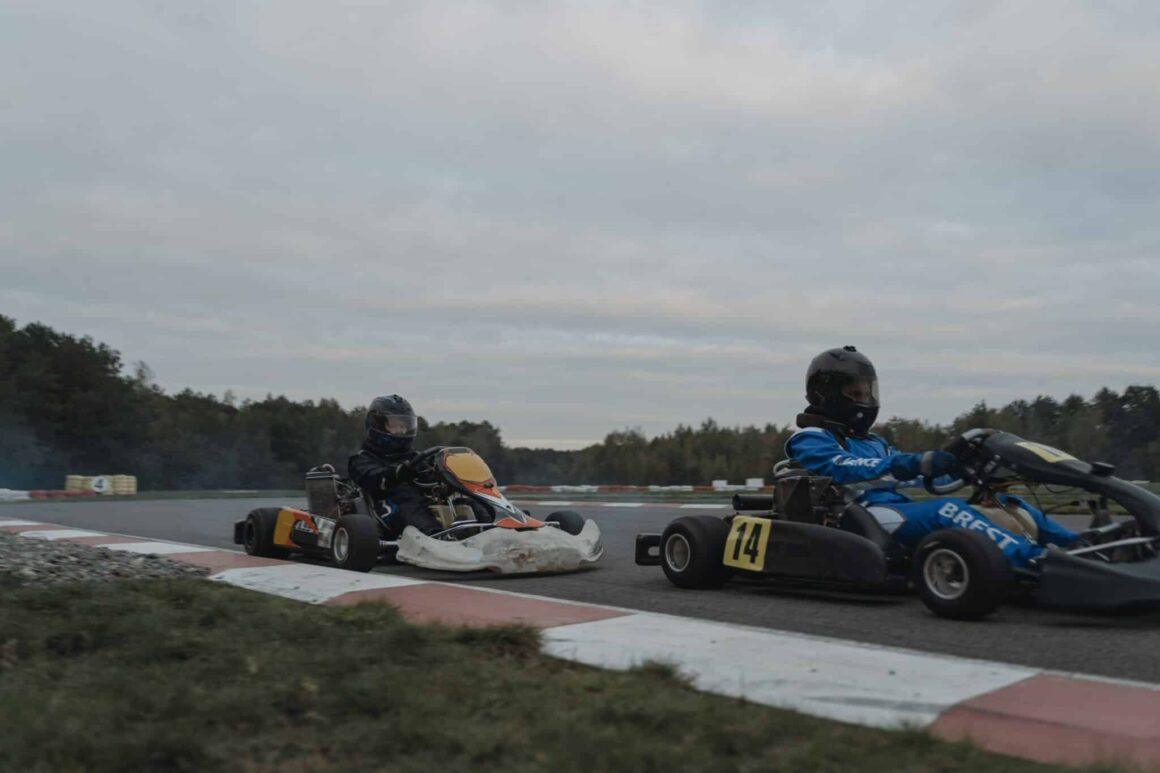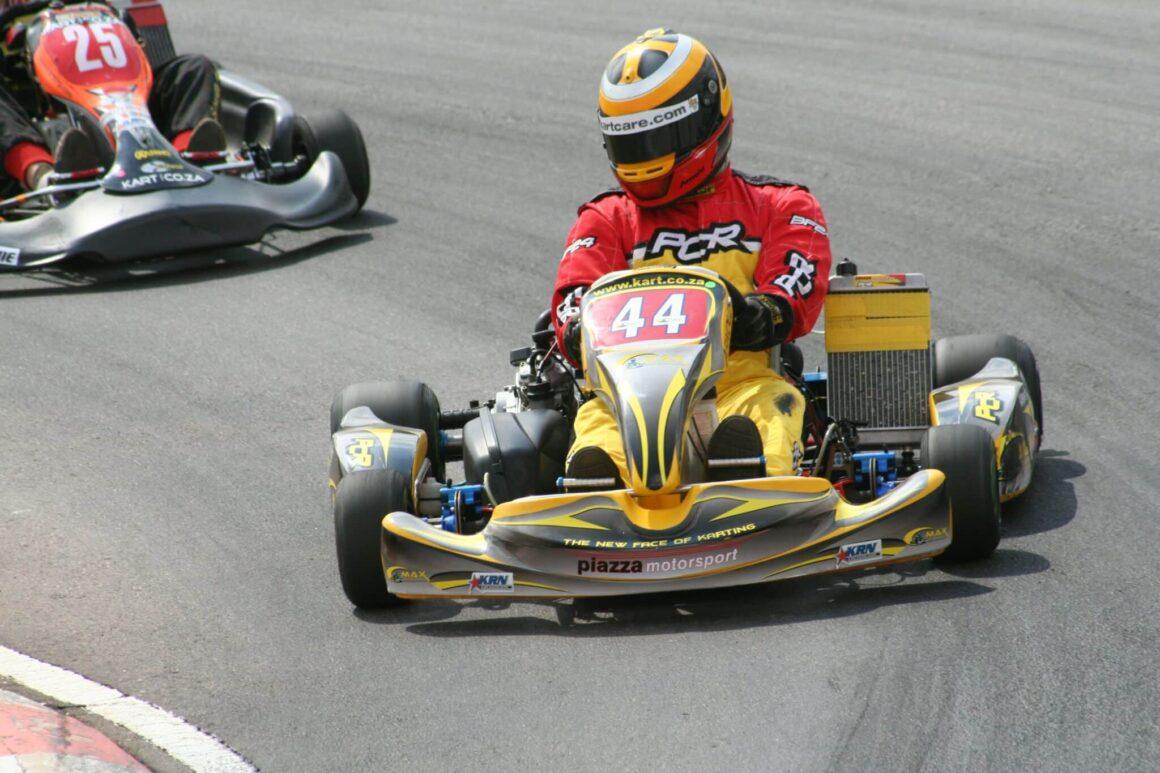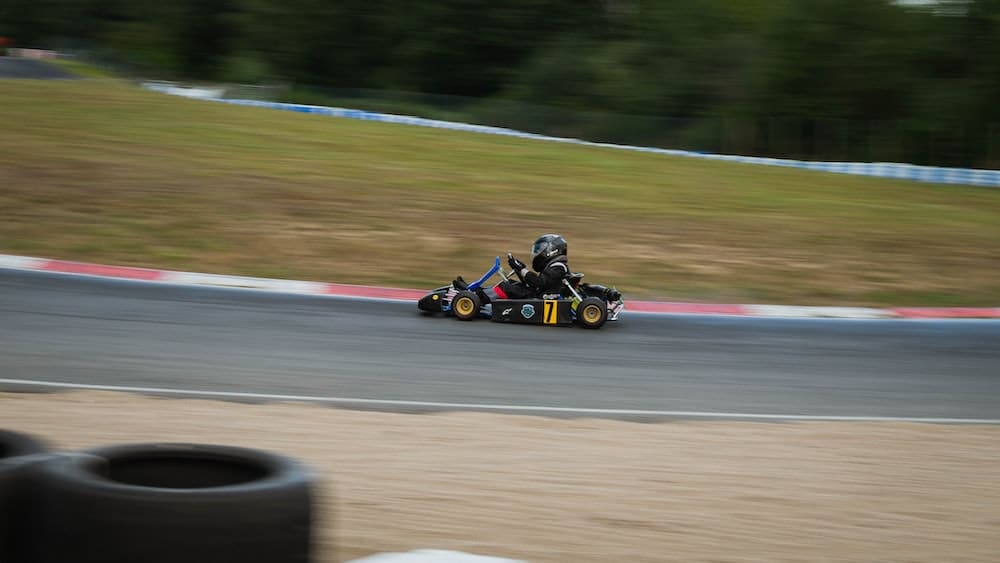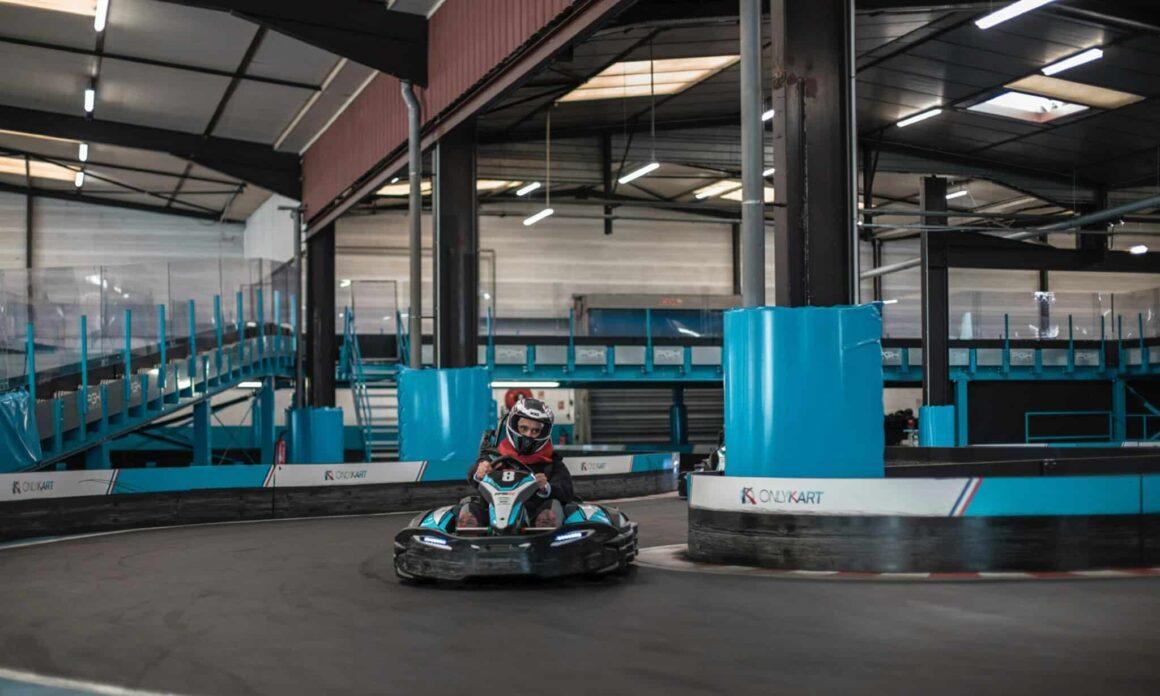Go-karts are small four-wheeled vehicles that offer an exciting racing experience. While go-karts come in different sizes and configurations, a key specification that karting enthusiasts are interested in is top speed.
Go-karts can reach speeds anywhere from 10 mph for kids models to over 150 mph for high-performance racing karts.
Understanding the factors that affect go-kart top speed can help you choose the right go-kart for your needs.
Brief History of Go-Karting
The origins of go-karting can be traced back to post-World War II era when people began attaching small engines to everyday objects like tricycles and roller skates.
The first true go-kart with a frame built specifically for racing is credited to Art Ingels in Southern California in the 1950s.
Popularity of go-karting grew through the 60s and 70s, with the first professional karting association, World Karting Association, being formed in 1974. Karting continues to thrive today as an amateur hobby and professional motorsport pursued by racers of all ages.
Different Categories and Classes of Go-Karts
There are different categories and classes of go-karts designed for different age groups, experience levels, and purposes. These classes can give an indication of the top speed to expect from that go-kart type.
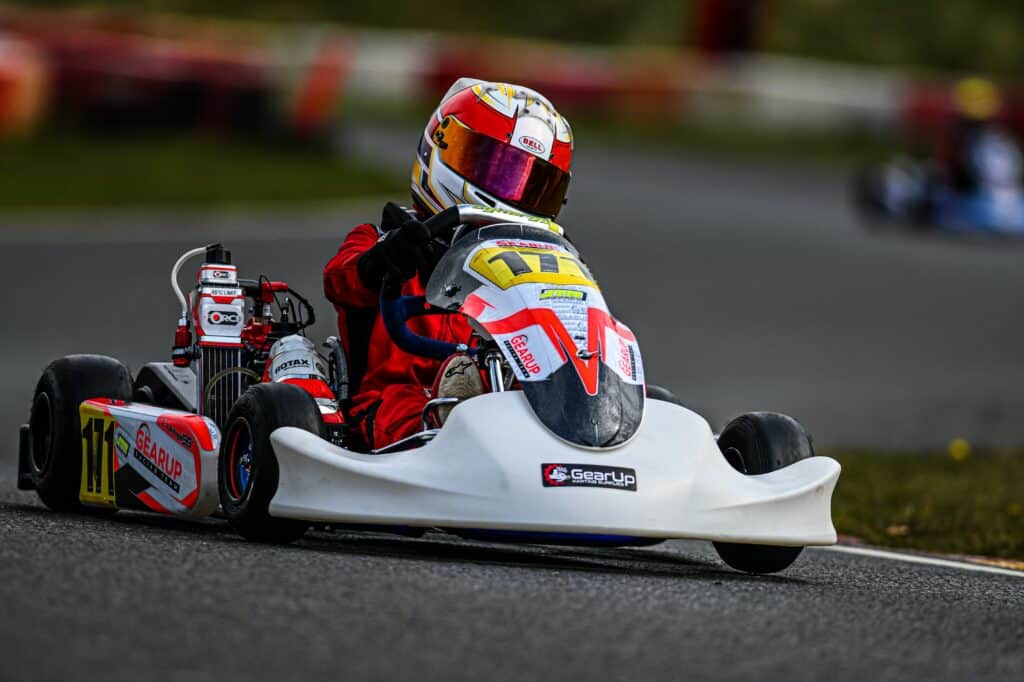
Youth/Kids Class
Kids go-karts are designed for young children, typically under age 8. They have small frames and engines limited to 5-10 hp. Top speeds are less than 15 mph.
Rookie Class
Beginner go-karts for ages 8-15 years old. Slightly larger than kids karts with engines around 10-15 hp. Top speeds of 25-40 mph.
Semi-Pro Class
Intermediate level racing karts for teen and adult beginners. Engine sizes of 100cc displacement and 15-25 hp. Top speeds of 45-60 mph.
Master Class
Advanced racing karts for experienced adult drivers. Engines over 125cc and up to 40 hp. Top speeds exceeding 70 mph.
Factors Affecting Go-Kart Speed
The maximum speed a go-kart can achieve depends on several key factors:

Engine Size and Type
Larger engines produce more horsepower allowing faster acceleration and higher top speeds. Racing karts may use specialized 2-stroke or 4-stroke engines.
Weight and Aerodynamics
Lighter karts with optimized aerodynamics have better power-to-weight ratios and less drag allowing higher speeds.
Comparing Top Speeds by Go-Kart Class or Type
Commercial Indoor Go-Karts
Typical top speeds of 10-25 mph. Electric motor power limited for indoor tracks. Focus is on fun not speed.

Racing Go-Karts
Vary widely by engine class from 25 mph for juniors to over 100 mph for championships. Major races are held on specialized outdoor circuits.
Off-Road Go-Karts
Off-roading models designed for rough terrain with large tires and suspensions. Top speeds of 40-60 mph depending on engine size.
Comparing Gas and Electric Go-Karts Top Speed
Electric Go-Karts Speed Spectrum
Electric go-karts typically max out at lower speeds than gas models. Youth models may reach 10 mph while performance electric karts can get up to 50 mph. But electric karts have fast acceleration off the line.
Gas Go-Kart Speed Range
Gas-powered go-karts have a very wide speed range based on engine size and tuning. Entry-level karts reach 25-40 mph. Racing karts exceed 100 mph. Downside is they require maintenance like oil changes.
World’s Fastest Go-Kart Record
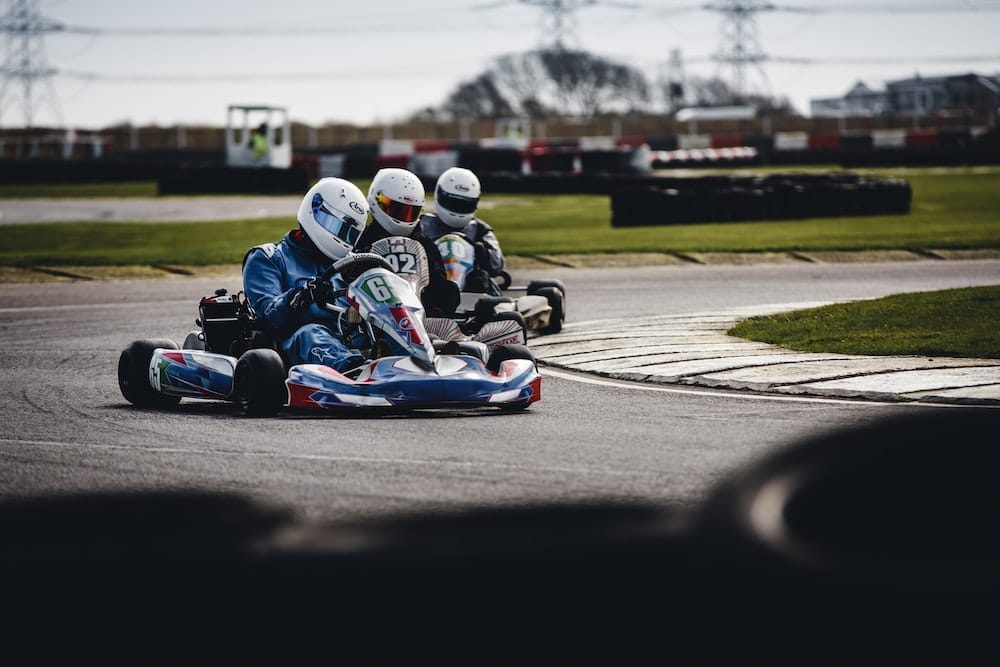
The current fastest speed reached on a go-kart is 149.1 mph, set in 2019 by Niall Murray at the Santa Pod Raceway in England. It used a specially built 400cc engine to break the previous 141 mph record also set at Santa Pod in 2015. These speeds were achieved under controlled conditions with safety measures.
Enhancing Top Speed: Modifications and Enhancements
Performance Tuning
Engine tuning techniques like installing racing cams, adjusting ignition timing, and modifying air intakes or exhausts can generate more horsepower and increase top speed.
Aerodynamic Improvements
Upgrading bodywork, sidepods, nosecones, and rear wings reduces drag and improves stability when approaching top speed.
Safety Measures when Aiming for Top Speed
When modifying a go-kart for maximum speed, it’s crucial to upgrade safety equipment as well. This includes improved brakes, racing seatbelts, roll cage, fire suppression system, and personal gear like helmet and racing suit. Make sure to test in controlled conditions.
Conclusion
Go-kart top speed is dependent on factors like engine size, drivetrain, and weight. Commercial karts focus on fun over speed, while racing karts are highly tuned for blazing speeds exceeding 100 mph. No matter your goals, educate yourself on kart capabilities and take proper safety steps when driving at the limit.
FAQs about Go-Kart Top Speed
How to increase go-kart speed?
Upgrading to a larger engine, reducing weight, adding rear spoiler, performance-tuning using racing components, and improving aerodynamics are some ways to potentially increase go-kart top speed.
Which is faster gas or electric go-karts?
Top-end speeds are ultimately higher with gas-powered go-karts due to the power output potential of high-performance gas engines. But electric go-karts provide faster acceleration off the line. So “faster” depends whether you prioritize acceleration or maximum speed.
